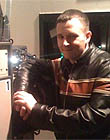|
|
This topic comprises 4 pages: 1 2 3 4
|
|
Author
|
Topic: Could digital sound be one of the worst things to happen to theatres?
|
Evans A Criswell
Phenomenal Film Handler

Posts: 1579
From: Huntsville, AL, USA
Registered: Mar 2000
|
 posted 12-19-2003 11:08 PM
posted 12-19-2003 11:08 PM





At the risk of being shot, I'm going to, for argument's sake, pose this question in the thread title.
I've seen far too many movies where the experience was totally marred by the digital sound not working properly. The most common problem is the sound cutting in and out, going from digital to analog and back every few seconds. At other times, an entire reel may not play in digital and on occasions an entire movie won't. During the drop, the audience is usually treated to distorted sound, usualy of a much lower volume, from an out-of-calibration analog system.
Defective films seem to be an increasing problem. Every friend I've talked to who has seen Lord of the Rings III has told me about digital sound cutting out in theatres locally, and I've read the film-tech posts in the movie review thread mentioning the same thing in other places. This is a widespread problem on a very high-profile movie. Bruce Almightly had a similar widespread problem on one of the reels. The presentation I saw locally was marred by the in-and-out digital/analog switch every seconds during a reel.
Another big problem is that theatres, once they get digital sound, fail to maintain the analog system. Ideally, when the digital sound cuts out, the system will default to the analog soundtrack, which hopefully will sound almost the same as the digital, so there won't be a sudden change in volume and sound characteristic. Nearly every theatre I've been to has a sudden change in volume (usually much lower) and various sorts of distortion when dropouts occur.
Back when analog sound was all there was, there was a need to keep the analog system calibrated and in good working order. A well-calibrated Dolby SR system can sound very good, and there is no reason, except for extreme laziness, not to keep the Dolby SR working. Doing so can make the difference in a ruined presentation for customers when a defective digital soundtrack is present, or when anything else causes the digital system to fail.
The drastic sound changes when digital dropouts occur are the one of the most distracting problems I encounter in theatres nowadays. They happen so often that I usually expect them in every movie at least once for a few seconds. Everyone notices the drastic sound change and it really takes people's minds out of the the movie they're watching.
I feel that the problem isn't the digital sound in itself, but the way it was implemented. The implementations of the 3 digital systems just aren't good enough to be foolproof enough for the way film is handled in the average multiplex. (Note that I'm not saying a well-run multiplex, since few are).
I'm having a lot of friends tell me "Don't go to theatre X to see Lord of the Rings. It was awful. The sound kept cutting in and out near the end.", where X is either theatre showing LOTR here in Huntsville. If the word going around is that theatres can't play movies without sound dropouts, especially on a movie like LOTR that many people see, more and more people are going to wait for DVDs if the labs can't produce reels with working digital sound and theatres can't get their act together to prevent other dropouts not caused by defective film. This problem is going to seriously hurt theatres if it keeps happening.
More and more people are getting the idea that their home theatre sound systems are as good or better than what they hear in theatres and these digital dropout problems are going to make them believe that the theatre sound systems are nowhere as reliable as their home systems either. This is not good for the future of movie theatres.
Opinions?
| IP: Logged
|
|
|
|
|
|
Aaron Garman
Phenomenal Film Handler

Posts: 1470
From: Toledo, OH USA
Registered: Mar 2003
|
 posted 12-19-2003 11:25 PM
posted 12-19-2003 11:25 PM




I agree in a way. I love digital sound in the fact that it is clear, free of analog distortions, and can have a nice impact. However, I do agree that now no one cares about the analog backup. The average theatre would say, "If digital works, analog can go broken for the time being." Too many times has this happened at our place. For example, in one of our Dolby houses, when the sound goes into analog, there is a loud buzz/hum coming from the right speaker (which is also in addition to some low frequency hum that always exists). Nevertheless, why can't people just care?! Also, why can't those who care (like me) get the chance to voice their opinions? Too many times to my superiors dismiss me, claming I don't know what I'm talking about. Ugh, just terribly frustrating. ![[Mad]](mad.gif) ![[Mad]](mad.gif) ![[fu]](graemlins/fu.gif) ![[fu]](graemlins/fu.gif)
AJG
| IP: Logged
|
|
|
|
|
|
|
|
|
|
|
|
|
|
Jack Ondracek
Film God

Posts: 2348
From: Port Orchard, WA, USA
Registered: Oct 2002
|
 posted 12-20-2003 02:09 AM
posted 12-20-2003 02:09 AM





Maybe I've been blessed by the odds... I haven't had nearly the troubles that are mentioned here. I may not have the current state-of-the-art, but I'm pretty happy with what I have. My prints do not toggle out of digital unexpectedly, my SR kicks much butt, and I can switch over to SR without worrying about offending my audience.
Out of 3 DTS systems and one DA20/CAT701 combo, I have had only one case where the audio toggled frequently between digital and analog. That was during the period when the power supply cable in my DA20 was in the process of crapping out & I didn't know (yet) what was going on. It's worked flawlessly since I fixed that problem. In any case, the problem had nothing to do with the print.
I have had to replace a power supply and a drive in a DTS 6D, but even with those problems, if the system started at all it worked fine, though perhaps with only 2 of the 3 drives functioning. After replacing the supply and the drive, I've had no further problems.
The only trouble I'm having with LOTR is that my CP65 is toggling back up to SR at the end of the show, after the automation puts it in non-sync. That's not supposed to happen unless the 6D toggles in and out of digital after the non-sync switch, which it may be doing... I'm still tracking that down.
As for digital vs analog, how hard can it be to keep the system working? Generally speaking, if you do a good A-chain, keep things clean, keep an eye on the levels (especially if you're still using exciter lamps) use a good film cleaner (hint), and make sure everyone stays on the front side of the service covers, this stuff should work pretty reliably. Out of all the elements in my booth, my sound systems are probably up there as reliable as anything else. I spend far more time fussing with my platters and my remaining good ole PRO-35 machines than I do the sound racks. My analog systems do get used, mainly because I don't care much for the compression they're putting on a lot of the trailers we get. Running in SR... or even A on the extreme tracks calms those trailers down to the point where you don't run screaming for the volume control. Call it a personal choice... maybe the purists here won't agree with the practice. I know I'm not fulfilling the trailer producers' goal of filling my auditorium with ear-pounding audio.... and I'm OK with that.
As for Evans' observations; I've been to several screenings at a Seattle AMC theatre. Over the past year or so, there have been serious SDDS problems in one of their larger auditoriums. They know it, will admit it if you ask, yet are still using the processor over a year later. Apparently, they'll run the darned thing until the company pulls it... which they say (think) will happen eventually. That is pretty sad.
| IP: Logged
|
|
Brad Miller
Administrator

Posts: 17775
From: Plano, TX (36.2 miles NW of Rockwall)
Registered: May 99
|
 posted 12-20-2003 02:55 AM
posted 12-20-2003 02:55 AM




David, yes I still run previews in analog, without surrounds or subwoofer. I also run them at typically 4-4.5 on the fader and my features at 6.5-7.5 on the fader. Never a complaint. ![[Cool]](cool.gif)
By the way, we screen all of our movies in SRD with the analog light source (led or exciter, depending on location) OFF. This way if the digital fails at any point during the movie, it will be painfully obvious to anyone check screening the print. Very, very, very rarely is there ever a blip. If it's just a quick blip in the reel, we let it go knowing that the analog will cover it up.
Jack, I could be wrong here, but I thought the 6D had logic built into it such that during the last 60 seconds of a movie's end credits the dts player could not pulse itself back into digital if it was to drop out and come back in. Maybe a one time glitch on the programming of the discs for this movie???
| IP: Logged
|
|
Jack Ondracek
Film God

Posts: 2348
From: Port Orchard, WA, USA
Registered: Oct 2002
|
 posted 12-20-2003 03:05 AM
posted 12-20-2003 03:05 AM





That's entirely possible, Brad. This is the first problem I've had of this sort, so I'm trying to be open minded about the source. The docs say that the "interface" card between the data cable & the CP65 is supposed to prevent the system from reverting to SR (or "A") when the '65 is non-sync mode. I didn't see a 60 second window mentioned, nor did the book say anything about this being programmed within the disk... though I suppose both could be possible. I'm going to try a couple more things before I narrow this down... maybe even bring in the end of the print I ran on that screen before LOTR. Should have a better idea what's going on by Tomorrow.
The disk programming idea is interesting though. Theoretically, if you're in non-sync, the system would have to drop out of digital, then go back into it (forcing the '65 to digital), then drop out again in order to revert to SR. If that's happening, it's pretty fast, because I don't see any switch out of non-sync to digital. It looks like it's going right up into SR.
| IP: Logged
|
|
Jeff Klump
Film Handler
Posts: 22
From: Austin, Texas, USA
Registered: Aug 2003
|
 posted 12-20-2003 04:11 AM
posted 12-20-2003 04:11 AM



I agree on many of the points listed above. I believe that techs these days are overworked and most projectionist don't know how to handle prints correctly or take care of their equipment. Our tech barely gets to make it out because he has to watch over theatres that take up half the state of Texas. That's a lot of screens for him to keep track of. At my theatre (Regal) we have become self-reliant because if something happens we don't have time to wait for our tech to arrive. Thus, this keeps us projectionists up to speed on how to keep every screen running at its best. At least two of us do.
I do feel that some prints come with bad digital tracks because I've seen even the best kept sound system fail. Except usually its only the DTS or SR-D thus leaving other digital tracks to choose from. Then again, we're blessed at our theatre to have DTS-6D's, SDDS 2000's, and SR-D in 14 of our 16 auditoriums and SDDS 2000 and SR-D EX with an SA-10 in our other 2. Oh yeah, and CP-500's in all houses. So, needless to say, every movie we run gets played digitally no matter what. This is probably why everyone in Austin knows our theatre is the best. (sorry, i had to boast a little there)
| IP: Logged
|
|
|
|
|
|
All times are Central (GMT -6:00)
|
This topic comprises 4 pages: 1 2 3 4
|
Powered by Infopop Corporation
UBB.classicTM
6.3.1.2
The Film-Tech Forums are designed for various members related to the cinema industry to express their opinions, viewpoints and testimonials on various products, services and events based upon speculation, personal knowledge and factual information through use, therefore all views represented here allow no liability upon the publishers of this web site and the owners of said views assume no liability for any ill will resulting from these postings. The posts made here are for educational as well as entertainment purposes and as such anyone viewing this portion of the website must accept these views as statements of the author of that opinion
and agrees to release the authors from any and all liability.
|

 Home
Home
 Products
Products
 Store
Store
 Forum
Forum
 Warehouse
Warehouse
 Contact Us
Contact Us




 Printer-friendly view of this topic
Printer-friendly view of this topic







![[Mad]](mad.gif)


![[fu]](graemlins/fu.gif)


![[Roll Eyes]](rolleyes.gif) The left channel problem is definitely like an intermittent connection. I've seen numerous shows in that house and this ALWAYS happens. If a tech went in there and sat through an entire show, I'm sure he'd confirm there's a problem.
The left channel problem is definitely like an intermittent connection. I've seen numerous shows in that house and this ALWAYS happens. If a tech went in there and sat through an entire show, I'm sure he'd confirm there's a problem.
![[Frown]](frown.gif)

![[Cool]](cool.gif)




